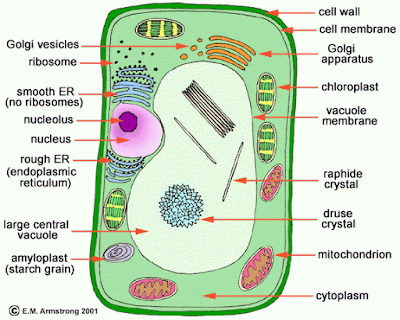TIME: 2:00 PM
WEATHER CONDITIONS: At the time of observation, it was approximately 67˚F outside. There was a 50% chance of precipitation throughout the day, and it was cloudy and misty with some light sprinkles. There was 29.77 in. of atmospheric pressure. The average humidity was 93%. There was 11 mph wind throughout the day.
CHANGES: TBD.
LEAF ANATOMY:
 |
| Source |
STRUCTURES AND FUNCTIONS:
- Cuticle: The cuticle of most plant leaves is thick and waxy, which enables it to resist losing too much water.
- Upper & lower epidermis: The upper epidermis of a leaf is a single layer containing transparent cells that allow most of the light that strikes them to pass through to the rest of the plant. This layer is also covered with the cuticle, which prevents water loss. The lower epidermis is where most of the stomata (the leaf's pores) are located. The cells inside this layer closely resemble those of the upper epidermis, however there are two guard cells. These cells control the opening and closing of the stomata.
- Guard cells (& stomata): These surround the stomata and are shaped like two cupped hands. If the guard cells fill with water, they swell and bend away from each other. This movement opens the stoma (the singular form of stomata, or the leaf's pores). If the guard cell has no water, it closes the stoma. Open stomata enables the flow of gas, which is beneficial because it allows for oxygen gas to be released during the process of photosynthesis.
- Spongy mesophyll: These are more loosely fit together and they lie between the palisade layer and the lower epidermis. Because there are air spaces in between each spongy cell, this allows for more air to enter the cell and for gas exchange.
- Palisade mesophyll: These are column-like cells that lie just under the epidermis of the plant leaf. Because of their irregular shape, they also have space in between that allows for the passage of gas. This particular structure comes in handy during the process of photosynthesis, because it allows for the passage of carbon dioxide gas into the stroma, which works to create glucose.
PLANT CELL:
 |
| Source |
CHLOROPLAST:
PHOTOSYNTHESIS EQUATION:
(sunlight)
6H2O + 6CO2 --------- 6O2 + C6H12O6
PHOTOSYNTHESIS SUMMARY:
This is the process where autotrophic organisms use sunlight or another form of energy to produce glucose from water and carbon dioxide. The glucose is eventually made into ATP through cellular respiration. Oxygen is also formed but is released back into the environment. Photosynthesis takes place in two reactions, the light reaction and the dark reaction (Calvin Cycle). In the light reaction, the chlorophyl found inside the chloroplast of the plant cell works to absorb the sunlight. It converts this light into forms of chemical energy called ATP and NADH. Oxygen gas is released back into the atmosphere from the plant's stomata, or pores. ATP and NADH then travel over to be used in the Calvin Cycle, and they join with carbon dioxide to produce the glucose molecules.
CHART:
 |
| Source |
(sunlight)
6H2O + 6CO2 --------- 6O2 + C6H12O6
PHOTOSYNTHESIS SUMMARY:
This is the process where autotrophic organisms use sunlight or another form of energy to produce glucose from water and carbon dioxide. The glucose is eventually made into ATP through cellular respiration. Oxygen is also formed but is released back into the environment. Photosynthesis takes place in two reactions, the light reaction and the dark reaction (Calvin Cycle). In the light reaction, the chlorophyl found inside the chloroplast of the plant cell works to absorb the sunlight. It converts this light into forms of chemical energy called ATP and NADH. Oxygen gas is released back into the atmosphere from the plant's stomata, or pores. ATP and NADH then travel over to be used in the Calvin Cycle, and they join with carbon dioxide to produce the glucose molecules.
CHART:
Reactants
|
Where in the chloroplast is the reactant used?
| |
6 H2O
|
thylakoid stacks
|
Light reactions
|
6 CO2
|
stroma
|
Calvin cycle
|
Products
|
Where in the chloroplast is the product made?
|
Is the product made during the Light reactions or Calvin cycle?
|
6 O2
|
stomata
|
Light reactions
|
C6H12O6
|
stroma
| Calvin cycle |
RESOURCES:
- http://www.biologycorner.com/worksheets/leaf_coloring.html
- https://www.msu.edu/user/morleyti/sun/Biology/photochem.html
- http://www.rsc.org/Education/Teachers/Resources/cfb/Photosynthesis.htm
- http://biology.about.com/od/plantbiology/a/aa050605a.htm
- http://users.rcn.com/jkimball.ma.ultranet/BiologyPages/L/Leaf.html
- https://www.boundless.com/biology/definition/cuticle/
No comments:
Post a Comment